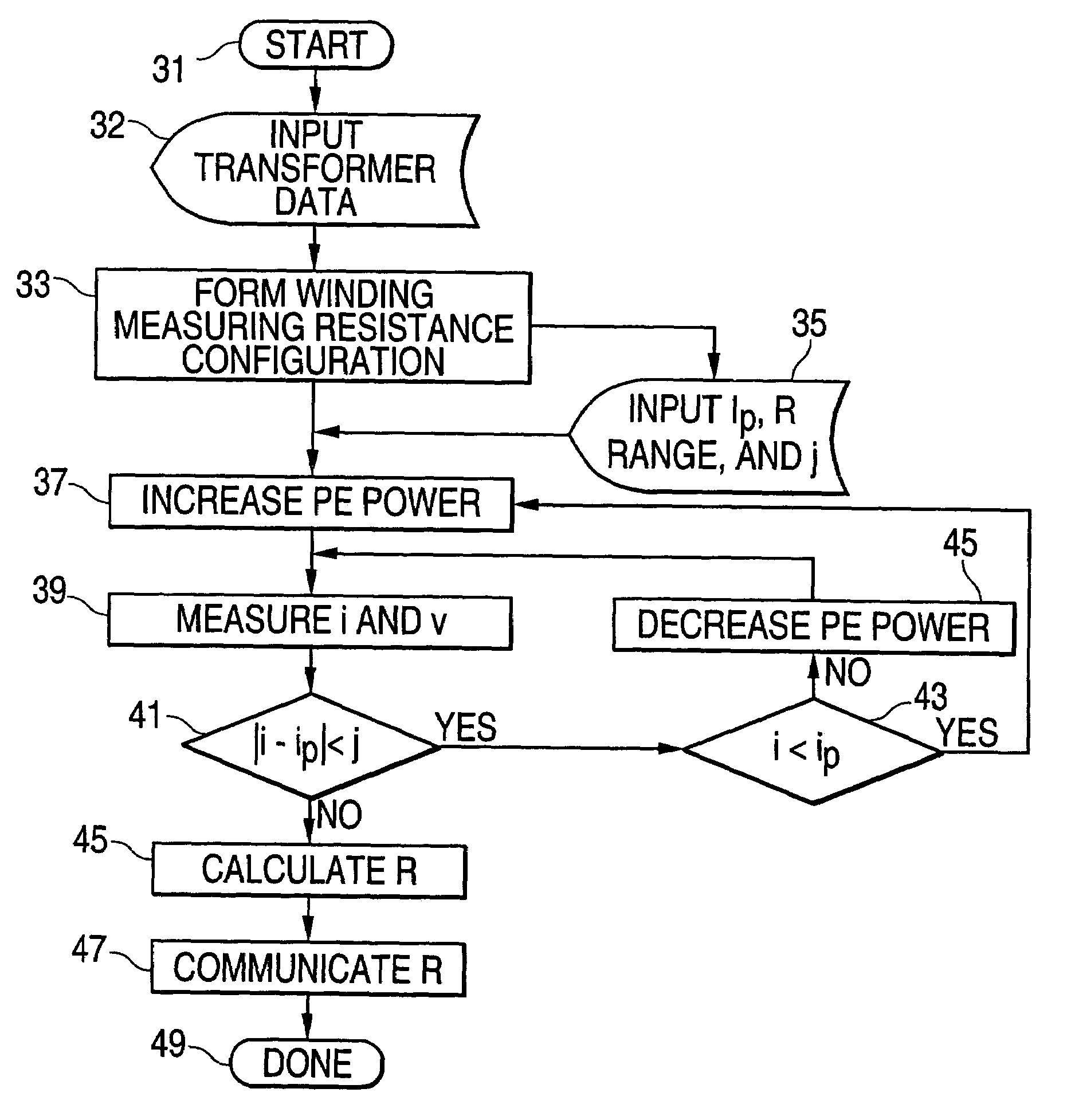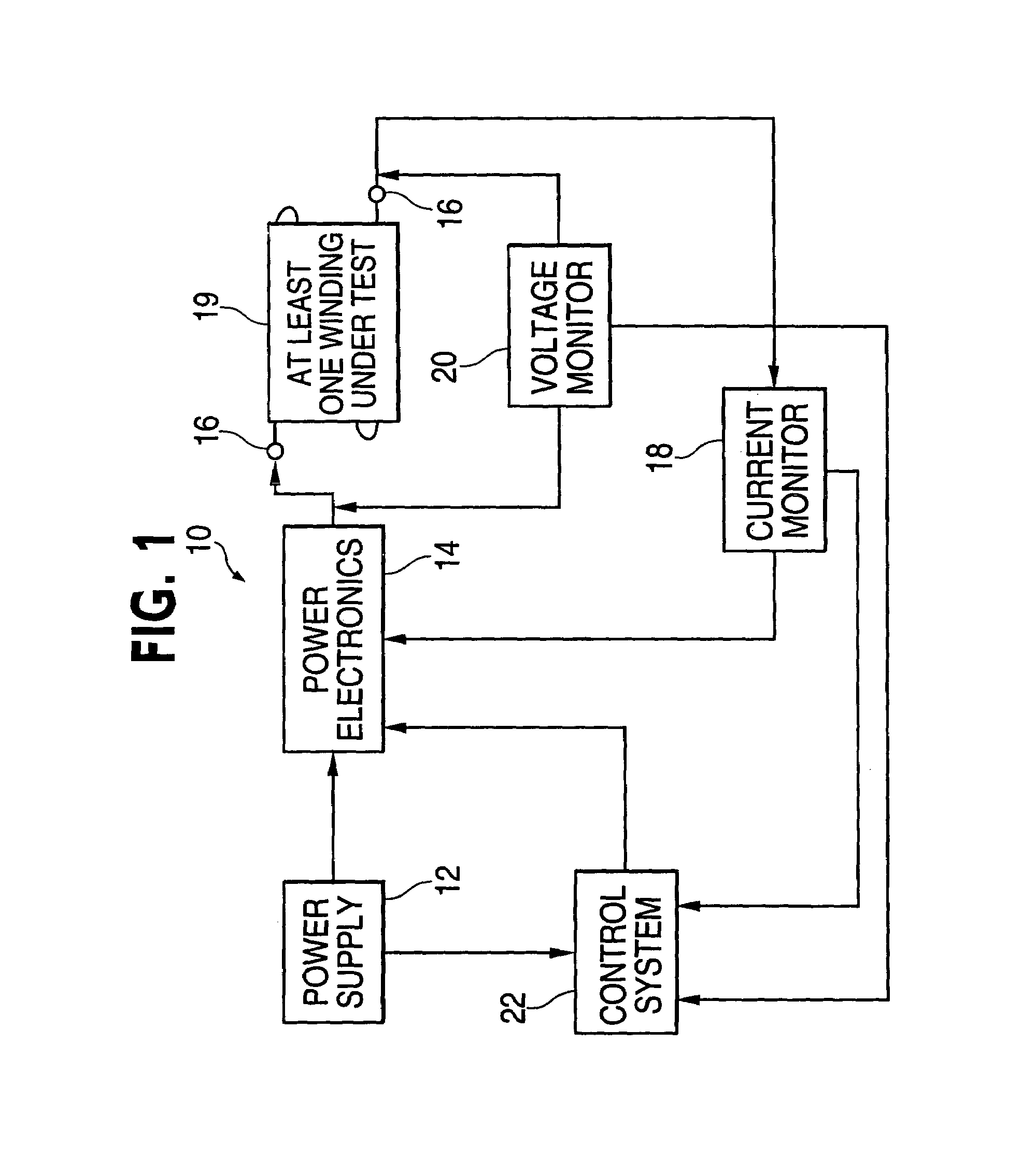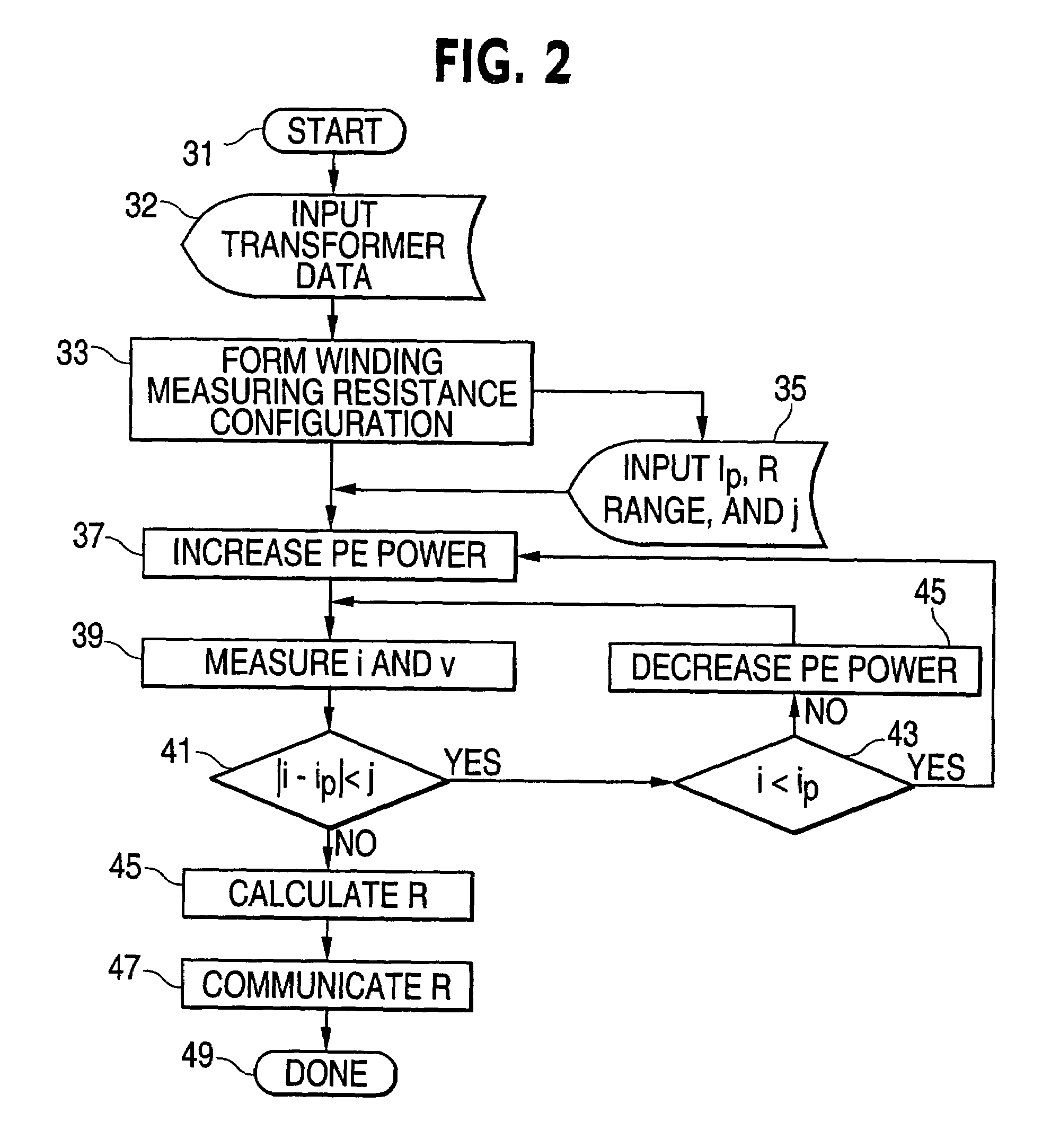Method and apparatus for measuring transformer winding resistance
a transformer winding resistance and winding resistance technology, applied in the direction of resistance/reactance/impedence, measurement devices, instruments, etc., can solve the problems of exposing operators and equipment to hazards, complicated winding resistance measurement problems, and large and heavy devices, so as to minimize the risk to operators and equipment, the effect of significantly reducing the amount of stored energy
- Summary
- Abstract
- Description
- Claims
- Application Information
AI Technical Summary
Benefits of technology
Problems solved by technology
Method used
Image
Examples
first embodiment
[0031]a transformer winding resistance measuring device 10 shown in FIG. 1 is powered by a power supply 12 which, when attached to an external source of electrical energy (not illustrated), provides electrical power to the components of the device. A controllable power electronics module 14 provides a desired test current signal with the maximum current substantially lower than the core saturation current to the connecting terminals 16 of the winding resistance measuring configuration 19 comprising at least one winding as for example illustrated in FIGS. 5a–d. A current monitor 18 measures the current flowing in the winding resistance measuring configuration as for example without limitation illustrated in FIGS. 5a–d during the testing, and a voltage monitor 20 that measures the voltage drop over the winding resistance measuring configuration 14. A control system 22 controls the controllable power module to generate the test current signal according to predetermined values, user inp...
embodiment 100
[0043]The preferred embodiment 100 is illustrated in FIG. 6. A regulated power supply 102 is coupled to a source of power source 103. The regulated power supply 102 provides a regulated DC output for transformer winding resistance testing. The power supply output voltage and current is regulated by the digital-to-analog converter (DAC) 104. The output of the DAC 104 is set by microprocessor 106. The test current control circuit 112 contains variable frequency and buck converters which, controlled by the microprocessor 106, deliver the appropriate amount of test current to the test current configuration circuit 114. The test current measuring circuit 108 measures the regulated power supply output current. The measured current is converted by analog-to-digital converter (ADC) 110 to its digital replica and transferred to a microprocessor 106. The test configuration circuit 114 utilizes a system of relays to conduct the test current through the appropriate connecting terminals 16 to th...
PUM
 Login to View More
Login to View More Abstract
Description
Claims
Application Information
 Login to View More
Login to View More - R&D
- Intellectual Property
- Life Sciences
- Materials
- Tech Scout
- Unparalleled Data Quality
- Higher Quality Content
- 60% Fewer Hallucinations
Browse by: Latest US Patents, China's latest patents, Technical Efficacy Thesaurus, Application Domain, Technology Topic, Popular Technical Reports.
© 2025 PatSnap. All rights reserved.Legal|Privacy policy|Modern Slavery Act Transparency Statement|Sitemap|About US| Contact US: help@patsnap.com



